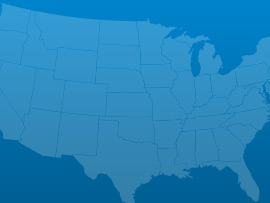Solid waste includes any discarded or abandoned materials that must be safely disposed of like household trash, commercial waste, and recycling. New Yorkers generated 5.15 pounds of trash per person per day, which is 12% higher than the national average. However, New York’s overall waste sent to landfills has been reduced by half over the last 20 years—from 14.6 million tons in 1990 to 7.7 million tons in 2012. Also, the number of landfills has been significantly reduced from 348 in the 80s to only 59 today with the closures of small, local municipal landfills that violated federal and state regulations, but even with a decrease in the number of landfills and combustors, the state has an estimated remaining capacity of 21 to 25 years. New York State has stepped up on managing waste through reduction, reuse and recycling, including composting of organic waste and changing electronic waste practices, but shifting the focus from disposing of waste to decreasing waste will keep up the progress made.
 Aviation
Aviation Bridges
Bridges Dams
Dams Drinking Water
Drinking Water Roads
Roads Solid Waste
Solid Waste Transit
Transit Wastewater
WastewaterA: Exceptional, B: Good, C: Mediocre, D: Poor, F: Failing, ?: Incomplete
Each category was evaluated on the basis of capacity, condition, funding, future need, operation and maintenance, public safety, resilience, and innovation
Aviation
89 public-use airports
Bridges
2,078 of the 17,442 bridges are structurally deficient
Bridges
$429.30 million in bridge funds came from the Federal Highway Bridge Fund in 2011
Dams
96% of the state regulated dams have an Emergency Action Plan
Dams
399 high hazard dams
Drinking Water
$22 billion in drinking water infrastructure needs over the next 20 years
Energy
32.286 gigawatt-hours of renewable energy every year, ranking it 4th
Hazardous Waste
87 sites on the National Priorities List
Inland Waterways
390 miles of inland waterways, ranking it 22nd nationally
Levees
146 miles of levees
Ports
38.9 million short tons of cargo in 2012, ranking it 20th nationally
Public Parks
$95.4 million of unmet needs for its parks system
Rail
37 freight railroads covering 3,479 miles across the state, ranking 13th nationally by mileage
Roads
16,311 of the state’s 114,709 public roads are major roads, and 23% are in poor condition
Roads
$5.7 billion a year in costs to motorists from driving on roads in need of repair, which is $505 /yr per motorist
Schools
$2.1 billion in estimated school infrastructure funding needs
Transit
3.8 billion annual unlinked passenger trips via transit systems including bus, transit, and commuter trains
Wastewater
$29.7 billion in wastewater infrastructure needs over the next 20 years

March 03, 2017
As the President’s repeated in his address to Congress his pledge to dramatically increase infrastructure spending to the tune of $1 trillion, various Congressional Committees

March 01, 2017
On Tuesday night, President Trump addressed a joint-session of Congress for the first time in his presidency. Infrastructure was among the many issues he discussed.

February 28, 2017
U.S. motorists set a new record for vehicle miles travelled (VMT) in 2016, driving over 3.2 trillion miles, an increase of 70 billion miles from

February 17, 2017
Romantic dates, the Grammy awards and celebrating black history are not the only milestones of this week; the Oroville dam crisis in California and the